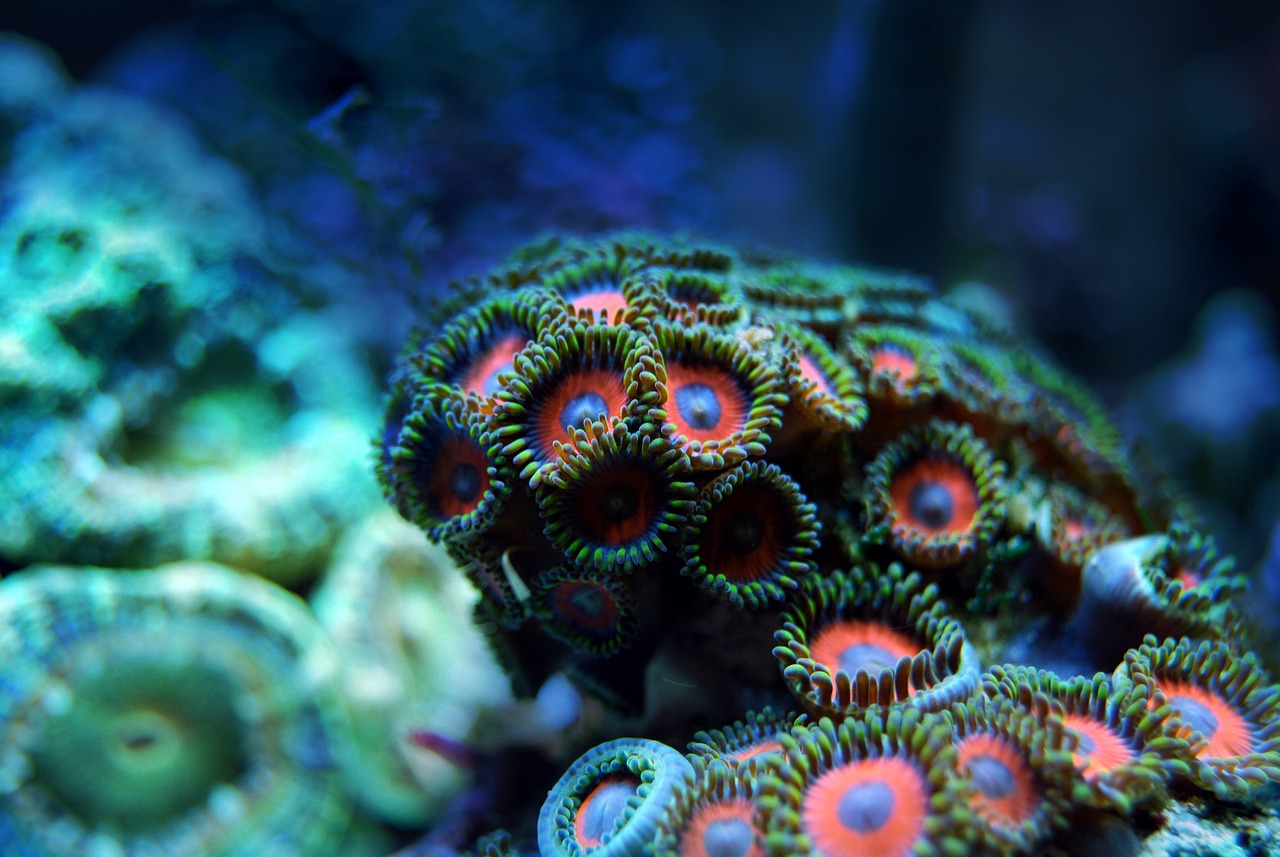Coral reefs are an interesting underwater ecosystem formed out of coral polyps and a hard limestone skelton made of calcium carbonate. They are often referred to as rainforests of the ocean. Such ecosystems are very beneficial as they cater protection against storms and erosions. They also provide job opportunities for the locals. What’s more interesting is they are a good source of food and medicines. However, despite their benefits, several factors threaten the existence of corals. Artificial and natural threats in the form of predators, storms, pollution, and unsustainable fishing practices have damaged the coral reefs. Additionally, another threat to coral reefs has been on the news lately- climate change.
Bleaching of the coral reefs
The global rise in temperatures due to climate change has completely bleached out parts of the Floridan coral reef. The Floridan coral reef is the largest reef ecosystem in the USA. Bleaching is the process where the coral reef expels the algal layer (typically Zooxanthellae), which gives color to the corals. Not just the colour, but bleaching also rids the corals of their primary source of energy. Algae are tiny organisms living inside the corals that have a commensal relationship with the corals. They are capable of photosynthesis and turn sunlight into food. So, the corals receive carbohydrates and oxygen from the algae.
How climate change affects their commensal relationship?
However, as temperatures rise, the algae cannot produce food (due to heat sensitivity) and instead produces toxins. The toxins affect the corals and cause them to get rid of the algae, thereby exposing their white skeleton, hence the term bleaching. It is a natural process and corals mostly recover from them. However, under sustained stress, the lack of recovery period affects them and they eventually die. A bleached coral isn’t a dead coral, but it rather weakens the coral and over time may result in death.
As temperatures rise, bleaching increases and the spread of infectious diseases becomes more frequent. Also, carbon dioxide from the atmosphere reduces the rate of calcification, thereby affecting reef building and decreasing the pH of the ocean through a process of ocean acidification.
What might eventually happen to coral reefs?
Experts predict that if this continues, the deeper coral reefs might suffer the same fate. The extreme rise in temperatures, lack of rain, and wind had pushed the oceanic climates to increase. A 101 Fahrenheit temperature at a depth of 5 feet resulted in the bleaching of corals. Bleaching can result in the death of the corals over time as they are more susceptible to diseases and predators. Corals, due to their extreme temperature sensitivity can start releasing their algal food and starve to death. This results in the bleaching and eventually death of corals.
Latest report on coral reefs
Sadly, a report from the coral restoration foundation reported 100% bleach at the sombrero reef off the marathon coast in Florida. The bleaching of corals has affected the fishes and other aquatic organisms. This problem not just affects the corals and the aquatic life but also the economy of Florida, as it largely depends on the tourism industry. Corals generate over $6.3 billion thanks to its associated activities like snorkeling, scuba diving, fishing, beach activities, and more.
Because this is the rainforest of the ocean, it has started to affect the aquatic life. Many fishes depend on the corals for survival. They rely on corals for food, shelter, and breeding grounds.
For some corals with a slow growth rate of 1 cm per year, it is difficult to naturally recover from the impact of stress.
Other threats
It is not merely the climate change that has caused the bleaching of corals, but also the pollution from land. They enter the area’s coastal and marine life through different sources like canals, estuaries & inlets and affect the growth and reproduction of the corals. The urban location of Florida, with shipping and boating industry results in an increased exposure of corals to pollutants. Especially, the anchors used in the boats dislodged the corals and the associated organism resulting in large-scale damage to the coral ecosystem.
Rescue operation to save the reefs
Conservation of reefs in the form of reef restoration is in progress. Due to the increasing intensity of bleaching over the last 10 years, Florida Keys National Marine Sanctuary and Mote Marine Laboratory came up with a Florida Keys BleachWatch Program 2005. An extension of the program called SEAFAN BleachWatch was created in 2013.
Reef restoration plan
With the creation of these two programs, a reef restoration plan was set up, which includes includes plucking genetically resilient and important reefs from their nurseries and taking them to land so they can wait out the extreme heat. Once they are outside the ocean they place them in climate controlled (29 degrees) water-filled tables in various research institutes and organizations in and around Florida. With just a few hundred genetically unique species of corals left, there is no option but to remove most of the coral reefs from the ocean. Sadly, some of the corals, when rescued were in a very bad state and may die soon. The increasing oceanic temperatures could result in the extinction of important species of corals.
Final thoughts
With over 90 % decline in healthy coral cover, the situation is unprecedented. Scientists from different organizations are collaborating and racing toward the protection and recovery of reefs. The situation requires immediate attention, but, it is not too late to preserve this beautiful ecosystem. Moreover, despite these efforts, it will not be sufficient to recover the reefs unless we address the core issue that is, climate change. Also, this is happening not just in Florida but large coral ecosystems are affected globally.
Comment down below if you have heard of coral reef bleaching in any other country.

